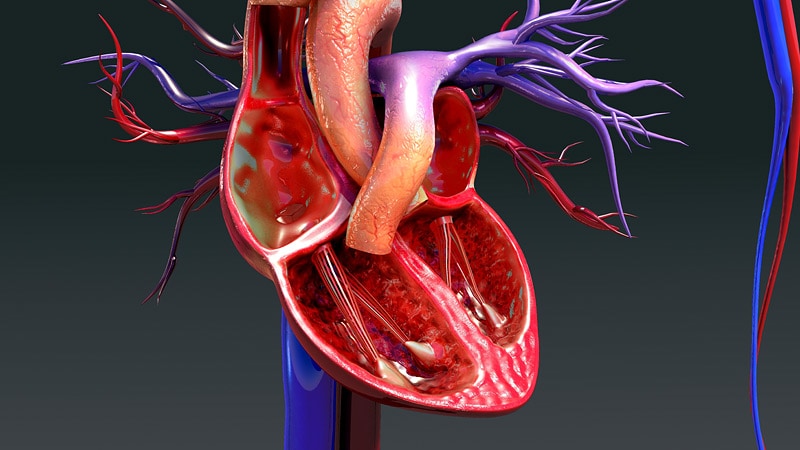Core Concepts
Heart sphericity predicts cardiomyopathy and AF.
Abstract
The study analyzed MRI images from 39,000 participants to determine the predictive value of left ventricle sphericity for cardiomyopathy and atrial fibrillation (AF). Key findings include:
Increase in sphericity index linked to higher incidence of cardiomyopathy and AF.
Genetic analysis suggests a shared architecture between sphericity and non-ischemic cardiomyopathy.
Sphericity index predicts cardiomyopathy, AF, and heart failure.
Four loci associated with sphericity identified.
Sphericity emerges as a distinct morphologic trait with unique features.
Potential for evaluating sphericity in echocardiograms for broader application.
Translation of findings to patient care and future research highlighted.
Spherical Heart May Predict Cardiomyopathy, AF
Stats
An increase of 1 standard deviation in the sphericity index was associated with a 47% increased incidence of cardiomyopathy and a 20% increased incidence of AF.
After adjustment for age at MRI and sex, an increased sphericity index was associated with an increased risk for cardiomyopathy (hazard ratio [HR], 1.57), AF (HR, 1.35), and heart failure (HR, 1.37).
Overall, a single standard deviation in the sphericity index was associated with increased risk of cardiomyopathy (HR, 1.47) and of AF (HR, 1.20), independent of clinical factors and usual MRI measurements.
Quotes
"Physicians should be extra careful and think about treatments when they notice a patient's heart is particularly round." - Dr. David Ouyang
"The study was well done and may serve as a foundation for future research." - Dr. Richard C. Becker
Key Insights Distilled From
by Marilynn Lar... at www.medscape.com 04-03-2023
https://www.medscape.com/viewarticle/990394
Deeper Inquiries
How can the findings on heart sphericity be practically applied in clinical settings?
The findings on heart sphericity can have practical applications in clinical settings by serving as a potential prognostic marker for cardiomyopathy and atrial fibrillation (AF). Clinicians can use the sphericity index, derived from MRI images, to assess the shape of the heart and identify individuals at higher risk for these conditions. This information can help in early risk stratification, monitoring, and potentially guiding treatment decisions. For instance, individuals with higher sphericity indices may warrant closer follow-up or more aggressive management strategies to prevent the development or progression of cardiac diseases.
How can the integration of genomics and artificial intelligence further enhance the understanding of cardiac remodeling processes?
The integration of genomics and artificial intelligence can significantly enhance the understanding of cardiac remodeling processes by providing insights into the genetic underpinnings of heart sphericity and related conditions. Genomic analysis can identify specific genetic loci associated with sphericity, as demonstrated in the study, shedding light on the molecular pathways involved in cardiac remodeling. Artificial intelligence, particularly deep learning algorithms applied to imaging data, can help in accurately quantifying sphericity and other morphological traits, enabling a more comprehensive assessment of cardiac structure and function.
What potential challenges or limitations might arise from using sphericity as a predictive marker for heart conditions?
Despite its potential benefits, using sphericity as a predictive marker for heart conditions may pose certain challenges and limitations. One challenge is the need for standardization and validation of sphericity measurements across different imaging modalities and settings to ensure reproducibility and reliability. Additionally, the interpretation of sphericity values in isolation may not capture the full complexity of cardiac remodeling, necessitating a holistic approach that considers other clinical and imaging parameters. Moreover, the clinical utility of sphericity as a standalone marker may vary depending on the population studied and the presence of confounding factors, highlighting the importance of individualized risk assessment and multidisciplinary collaboration in clinical decision-making.
0
